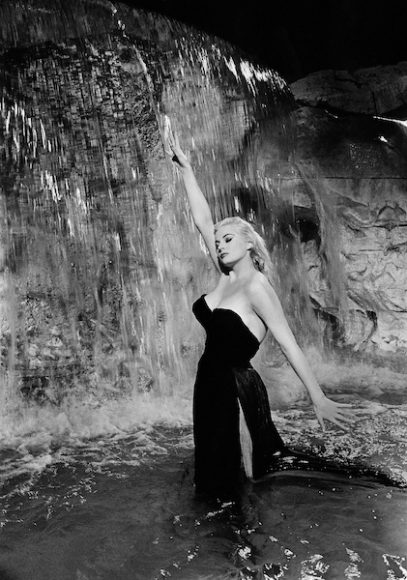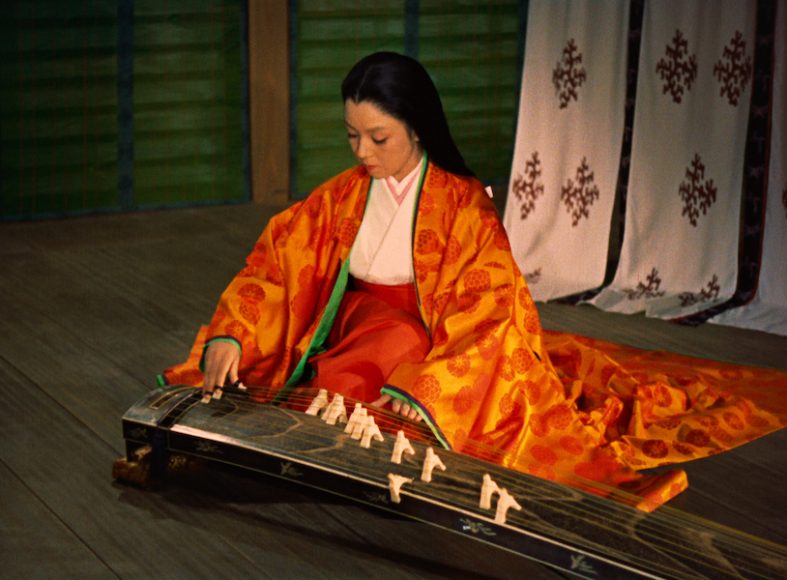Among the categories that fill the Academy Awards, the honors for Best Costume Design have always existed somewhere under that proverbial radar in terms of sparking public debate or controversy. But if you take a deeper dive into the category’s history, it seems to be among the most intriguing of the Oscar competitions.
The Best Costume Design Oscar was fairly late to the 91-year-old Academy Awards lineup. It wasn’t added to the categories until the 1948 competition. According to Jerry Dean Roberts, author of the blog “Over-Thinking Oscar,” this delay was a reflection of the film industry’s slow recognition of technical achievements.
“Oscar himself stands atop a reel of film encircled by five holes, each of which represents those original five branches of the film industry — producing, directing, acting, writing and engineering,” Roberts explains. “In the early years of the Academy Awards, much of the technical and artistic work such as editing and costume design was seen as menial work. Over time the industry got bigger and more prolific, and the need to reward them individually became necessary. That’s why it took so long for the costuming award to be formed.”
Initially, the academy split the Best Costume Design Oscar into parallel categories for color and black-and-white films, similar to the divisions in the category for Best Art Direction and Best Cinematography. Roger K. Furse’s costumes for Laurence Olivier’s “Hamlet” took the first black-and-white category’s prize while Dorothy Jeakins and Barbara Karinska, better known for her work for New York City Ballet, shared the color category for the Ingrid Bergman version of “Joan of Arc.” The awards were combined into a single category for the 1957 and 1958 films, then split up again until 1966, when Irene Sharaff won the final award in the black-and-white category for her “Who’s Afraid of Virginia Woolf?” costumes, which succeeded in making the glamorous Elizabeth Taylor and Richard Burton appropriately frumpy and rumpled respectively.
For many years, costume design and editing were the only technical categories in which women had a conspicuous level of representation. And women have traditionally been the more dominant force among the winners. The category’s top champion has been Edith Head, who was nominated 35 times and won eight awards.
In 1954, the Best Costume Design category broke with Academy precedent in offering the first-ever Oscar to a work of the global cinema. The Japanese drama “Gate of Hell” was chosen for the Best Costume Design (Color) Oscar over Hollywood epics “Brigadoon,” “Désirée,” “A Star is Born” and “There’s No Business Like Show Business.”
Over the years, the costume design category would seem to be more appreciative of foreign-language films than other technical categories. Among the international works to win this award were three Federico Fellini classics — “La Dolce Vita,” “8½” and “Fellini Casanova” — along with Ingmar Bergman’s “Fanny and Alexander,” Akira Kurosawa’s “Ran” and the Gerard Depardieu “Cyrano de Bergerac,” while 23 foreign-language films received nominations over the years, including such diverse works as “Seven Samurai,” “The Gospel According to St. Matthew” and “Death in Venice.”
Why has this category been more generous to foreign-language works?
“I suspect the answer is Hollywood’s age-old yen for exoticism,” says David Sterritt, editor-in-chief at the Quarterly Review of Film and Video. “The more foreign-seeming the look, the more it entices the eye and sticks in the mind.”
Joe Meyers, former film critic with the Connecticut Post, points to a period of time when the full academy seemed more accommodating of global cinema and offered a greater number of nominations in major categories to subtitled fare.
“I am always amazed at how hip to foreign films the academy was in the ’70s,” he says. “With Best Picture nominations for ‘The Emigrants’ and ‘Cries and Whispers’ and nominations for actors like Isabelle Adjani and the Best Director nomination for Lina Wertmuller for ‘Seven Beauties.’ You don’t you see as much of that now. In that period they seemed to really loosen up, but then they got conservative again. Go figure.”
Oddly, the Best Costume Design category rarely seemed to celebrate concepts that found their way into consumer fashions. There have been a couple of notable exceptions. Edith Head’s strapless dress worn by Elizabeth Taylor in “A Place in the Sun” created a bare-shouldered sensation in 1951 at the height of Christian Dior’s ultra-feminine new loock, while Piero Gherardi’s bold black strapless gown worn by Anita Ekberg in “La Dolce Vita” helped turn black from being the color of mourning clothes into sexy evening attire — especially if you plans to go dancing in Rome’s Trevi Fountain.
Meyers notes one of the most obvious omissions from the category’s history involved the trend-setting androgynous outfits favored by Diane Keaton in “Annie Hall,” adding that the 1977 competition included a highly unlikely nomination for the costumes in the disaster flick “Airport 1977.”
“Those were the days when studios really put everything behind advertising, hoping that a turkey like that would at least get some technical nominations,” he says. “And, sure enough, it did.”
The unlikely “Airport 1977” recognition could also be attributed to perennial nominee Edith Head sharing the nomination with Burton Miller. Jerry Dean Roberts acknowledges one flaw in the category involves its “slant toward rewarding the designer rather than the designs.”
Another anomaly with the category involves its fixation on historical dramas rich with period clothing or fantasy films with stylishly bizarre designs rather than contemporary productions with current fashions. Over the past half-century, only three films with contemporary settings have won this category — “Travels with My Aunt” (1972), “All That Jazz” (1979) and “The Adventures of Priscilla, Queen of the Desert” (1994) — but their designs were packed with eccentric theatricality rather than current styles.
Jill Schary Robinson, a Hollywood historian and daughter of MGM mogul Dore Schary, wistfully recalls that the contemporary films of Hollywood’s Golden Age offered costuming that inspired men and women to dress with more sharpness and style.
“Think of the films where the costumes were by Adrian and Walter Plunkett,” she says. “It was a period of great fashion design. That mode of design had grace and charm and dignity. We don’t dress the same way. We don’t have movies where people wear ball gowns. Today, nobody really gets dressed and the costume designs are not particularly original.”
That’s not to say that every film with memorable costume design received its due with a nomination or an award.
“‘Lawrence of Arabia’ didn’t get a nomination for costume design,” complains film blogger Roberts. “Neither did ‘Sunset Boulevard.’ How about ‘The Wild Bunch’ and ‘True Grit’? Believe it or not, no nomination for ‘A Clockwork Orange.’ What about the Indiana Jones pictures? How about ‘Back to the Future’? It sounds silly at first, but talk about period designs. Recently, I was surprised that there was no nomination for ‘Wonder Woman.’”
Yet Roberts admits that the “list of omissions by the academy in any category runs the risk of becoming a list of grievances. I have my gripes, but in the interest of time and good taste, I’ll leave it right here.”



